Basics: Beginner’s guide to understanding surfboard fins
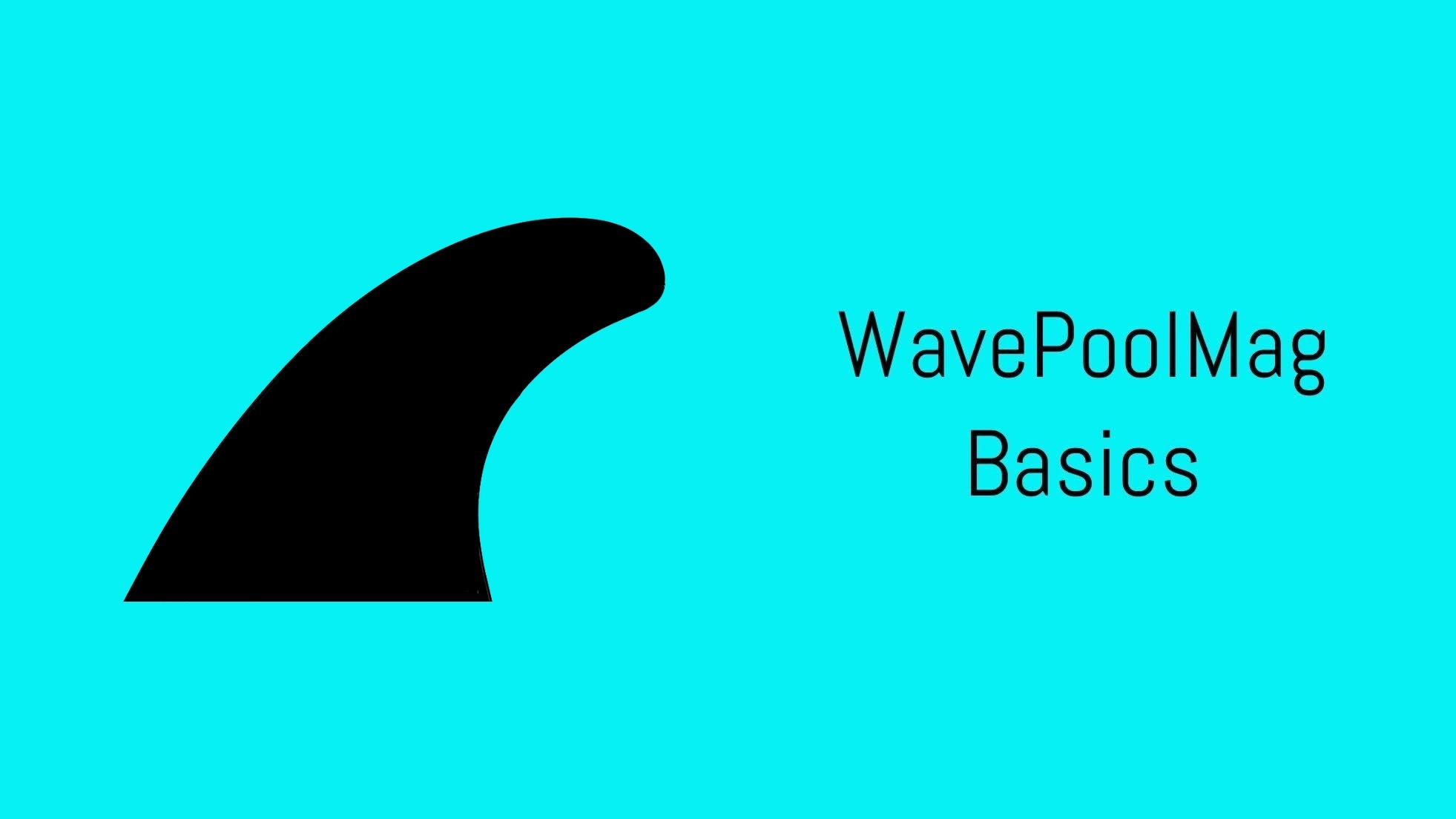
Choosing the right surfboard fins can be complicated. The average novice surfer probably doesn’t care much, or notice, what fins they’re rocking.
However, as a surfer progresses and starts to use the board more dynamically, they might start to get a little curious about how the fins are affecting the board’s performance. Some fins provide more speed. Some provide maneuverability. Some provide control.
And conditions matter too; The fin you use in a barreling wave pool may not be the fin you want surfing your local beach break. Here’s an introduction to the basic anatomy of a fin.
In this latest edition of WavePoolMag Basics, we explore surfboard fins.
Why do we need fins?
Before we get too ahead of ourselves, why do surfboards need fins anyway?
Just like a sailboat with a keel to hold its heading, surfboards use fins to control the direction and movements of the board. A board without fins is extremely hard to control as the surfer must use only the board’s rail to control direction. The ancient Hawaiians did just fine on finless Alaia boards. But then nearly 100 years ago, Tom Blake added a fin to a paddle board, and since then the fin has stuck around.
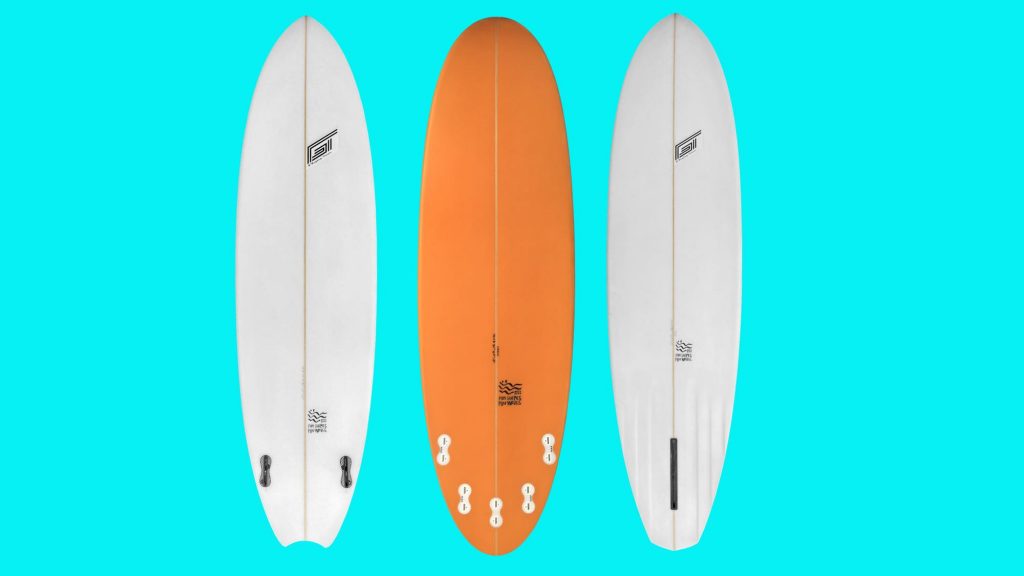
Fin arrangements
First, let’s do a little review of the standard types of fin setups you’ll see on a board:
Single fin – Faster due to less drag, but less maneuverable. More common on longboards or mid-lengths.
Twin fin – No center fin makes it faster and looser, allowing for water to freely pass under the board.
Thruster (3 fins) – More control in exchange for more drag (less speed). Most common setup.
Quad – Similar to the twin fin, but with more hold.
2 + 1 – A longboard center fin with two smaller thrust fins on the side. More control and drive than the single fin setup.
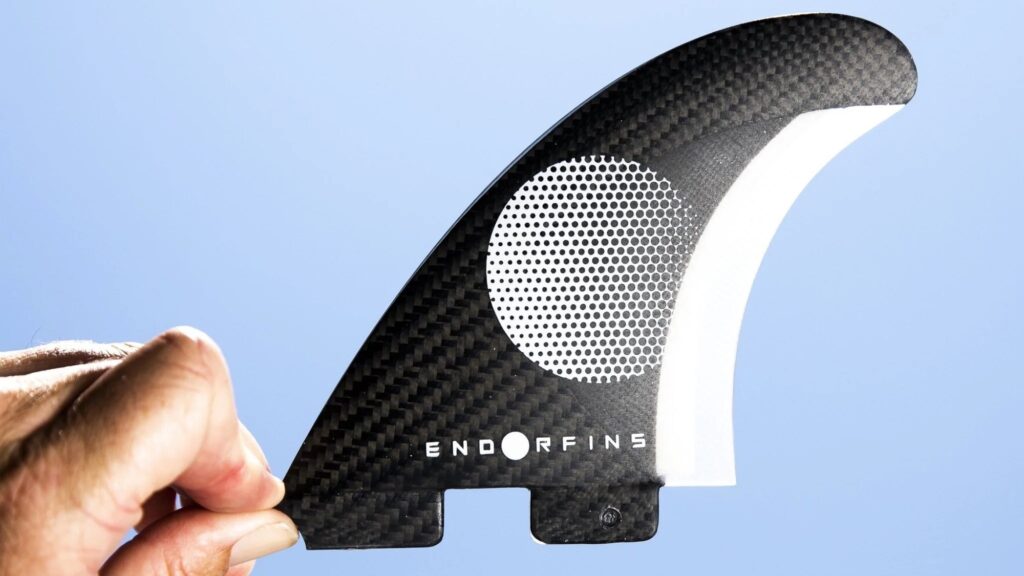
Qualities of a fin
While the surfboard fin arrangement will affect how the board performs, the shape and placement of the fins will play a factor as well.
Here’s what to look at when examining a fin:
Rake
The rake of a fin is how far it extends back from the center point of its base. A fin with severe rake will curve really far back from its base. A fin with very little rake will be more vertical from its base or more straight up and down. This creates a tighter pivot point for turning.
Foil
The thickness of a fin and how the thickness is distributed is called the foil. Foil creates lift. It’s the same concept that allows a hydrofoil to lift out of the water, or for an airplane to lift off the ground.
Cant
The cant is the angle at which the fin tilts away from the board. A center fin will have no cant, creating a 90-degree angle with the deck of the board. Look closely at the side fins and you will see they bend “outwards.” The more bend, or cant, the more maneuverable the board. But the greater maneuverability will come at the price of speed and drive.
Toe
The angle at which the fin points relative to the length of the board is the toe. For example, a center fin has no toe, perfectly in line with the stringer down the center of the board. The side fins will have toe, angled in, towards the board, which will increase maneuverability. Too much toe will cause drag. Most fin settings follow an invisible line from the front of the fin to the nose of the board.
Our friends at STAB give a quick explanation of Rake & Pivot.
Flex
When you are holding a fin, it doesn’t feel like a flexible object. However, under the immense pressure of water when on a wave, fins do, in fact, flex, to varying degrees.
A stiffer surfboard fin will more quickly release back to its original position during a turn, providing more stability, drive, and responsiveness. A more flexible fin will take more time to return to its natural position, which makes maneuvers “looser,” but sacrifices speed.
Size
The size of a fin will influence how much hold the board has in the wave. The amount of force that is exerted on the fin will determine what size fin should be used; i.e. The heavier the person, the larger the fins should be.
Powerful waves that exert more stress on the fins will also desire bigger fins. You’ll want bigger fins when surfing Oahu’s Sunset Beach versus surfing the wave pool in Waco.
Multiple factors determine a fin’s size: the surface area, the length of the base, the height, and the thickness.
Generally speaking, bigger fins are more stable. Small fins are looser.
Every fin design will come in various sizes. Pay attention to the fin’s sizing chart to see your ideal fit.
Construction material
In your pursuit of the perfect fins, you’ll notice that the prices vary greatly between the cheapest products and the most expensive ones.
Plastic/composite fins are the cheapest. For a beginner surfer, these will work perfectly fine. They are cheaper because they lag in performance across the board. Advanced surfers will find the fins to be heavy, weak, and overly flexible.
As you go up the price scale you’ll find fins that are made of stronger, lighter, more flexible materials such as carbon fiber or fiberglass. Teams of engineers with degrees in fluid mechanics are designing these fins, tinkering with and testing all the aspects of a fin that we mentioned above.
The pinnacle of fin technology is performance core. As its name suggests, performance core uses lighter materials in the core of the fin, often a hexagonal “honeycomb” type design, that is then wrapped in the material of choice, fiberglass or carbon fiber. The result is a fin that still has the flexibility and durability of the fiberglass or carbon fiber fins, but with a core construction that makes them even lighter.
The other consequence of the R&D that goes into high-end fins is price. While you can pick up a plastic set of fins for 15 bucks, a nice set of top-of-the-line fins will run you well over USD $100.
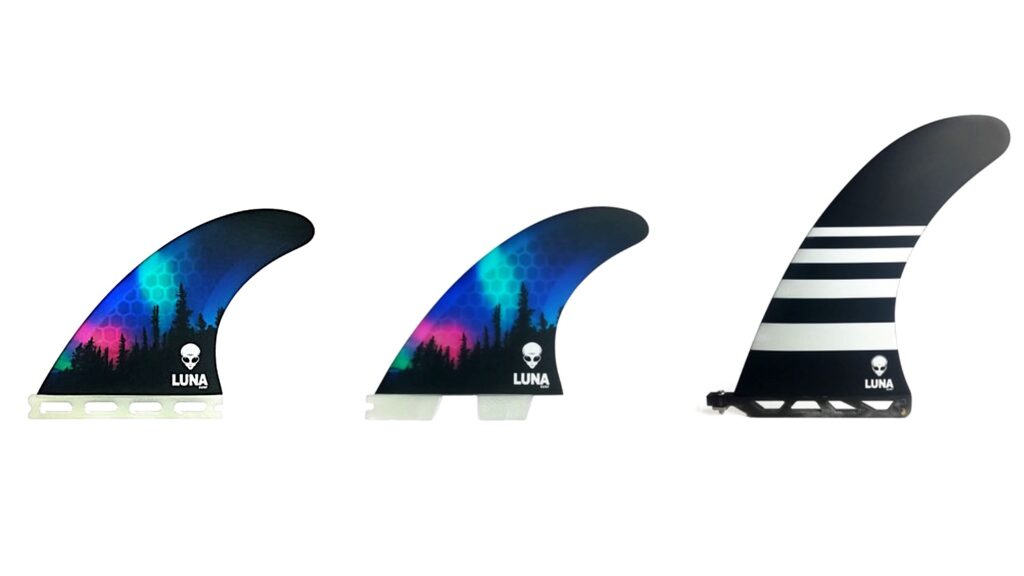
Check your fin boxes! One tab or two?
This should go without saying, but before you go out and purchase fins, check what type of fin boxes are in your board. Not all fins fit into all boxes.
FCS and Futures are the two main brands that dominate the market. An FCS fin does not fit into a Futures fin box, and vice versa.
When you get into longboard fins, which have a different, generally universal style of fin box, you will find much more variation/competition among brands.
Let’s not forget about glass on fins either – fins that are literally shaped with the board and glassed on. This style has fallen out of favor in modern times for practical reasons. Try traveling with a board with fins that cannot be removed. It’s not fun.
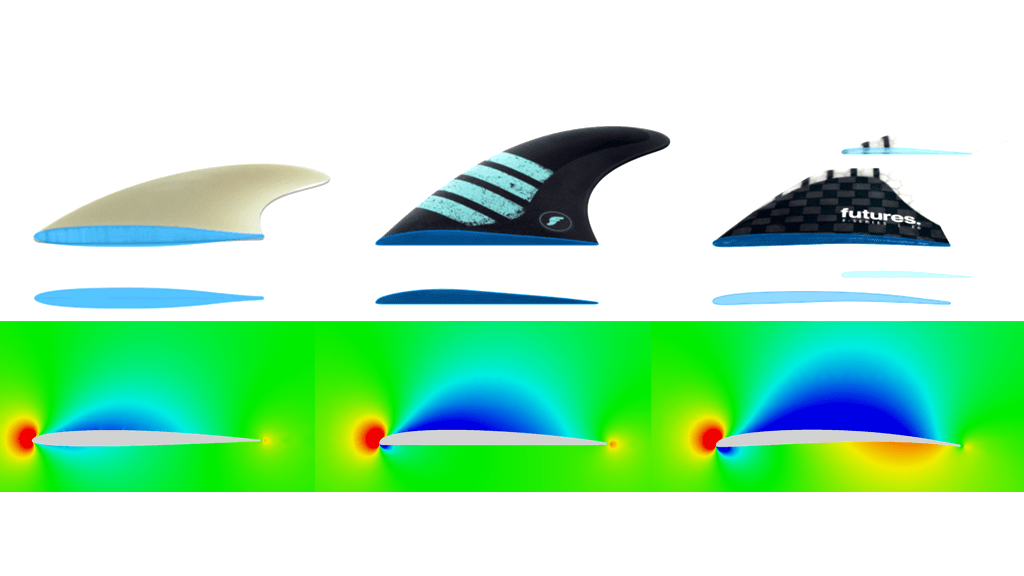
Picking fins: It’s all about the subtleties
Our tips for a beginner surfer trying to wrap their head around the design of their fins: Understand it, but don’t fixate on it too much.
Understanding which fins pair well with which board, or work well in which conditions, is a science that takes years of surfing to understand. And even then still many surfers don’t get it! Many surfers will naturally tend to love the fins that they used on “that one day” that the waves were epic. And remember, fins that go great on one board might not work as well on another board.
Consider that at many wave pools there are dedicated performance centers and demo fins. Take advantage of this and speak with on-site experts there to dispense advice.
If you are a beginner surfer making the jump to a quality fiberglass board, a nice set of fins might be worth the extra investment. You don’t want to put junkyard tires on your new Ferrari.
But if you are a novice (budget-minded) surfer still experimenting with the type of board that fits you best, don’t stress dropping the big bucks on fins right away.
Experiment with different fin setups, whether in the ocean or the wave pool, and figure out what suits you best.
Related Coverage
